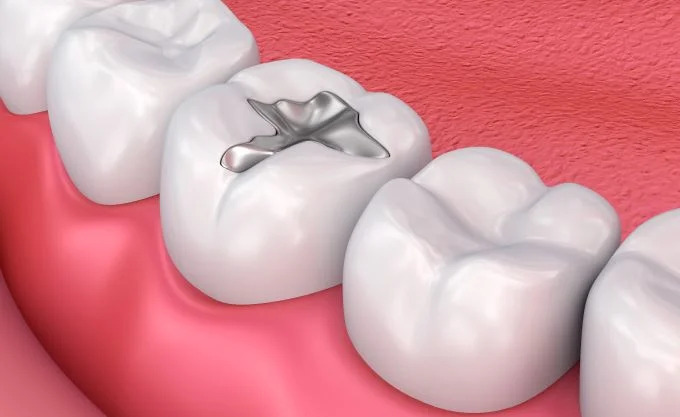
Dental Fillings in Alpharetta: What You Should Know
Having a healthy smile means more than just bright teeth—it means strong, well-protected teeth that can function well over years. In Alpharetta, dental practices that offer fillings, crowns, and bridges are central to restoring and maintaining tooth health. Here’s a guide to what dental fillings are, when they’re needed, what types there are, how the procedure works, and how to choose the right option for you.
What Is a Dental Filling?
A dental filling is a treatment used to repair a tooth that has been affected by decay (a cavity), crack, or wear. The idea is to remove the damaged or decayed portion of the tooth, clean the area, and then fill it with a material that restores its shape, function, and integrity. This helps prevent further decay, stops pain or sensitivity, and preserves more of the natural tooth.
When Do You Need One?
Here are common situations where fillings become necessary:
When you have a cavity from tooth decay, often detected via dental examination or X-rays.
If you feel sensitivity when eating or drinking hot, cold, or sweet things.
When a tooth has cracked or chipped—fillings can repair these minor damages.
To stop decay from progressing deeper into the tooth (towards the nerve), preventing more serious treatments like root canals.
Types of Filling Materials
Dental practices in Alpharetta and elsewhere typically offer several kinds of fillings. Each has pros and cons. Your dentist will help you choose based on location of the tooth, extent of damage, cost, and aesthetics.
| Type | Description | Advantages | Disadvantages |
|---|---|---|---|
| Composite (tooth-colored) | Resin mixed with glass or other materials to match tooth color. | Looks natural; bonds to tooth; less removal of healthy tooth structure; good for visible teeth. | May cost more; technique sensitive; may not last as long as metals under heavy chewing stress. |
| Amalgam (“silver”) | Metal alloy filling—strong and durable. | Very strong under heavy chewing; tends to last a long time; often more affordable for larger fillings. | Visible when smiling; may require removing more tooth; some patients prefer non-metal for aesthetic or personal reasons. |
| Glass Ionomer | Resin blended with glass, releases fluoride. | Good for small cavities, especially near the gumline or in children; provides extra protection via fluoride; gentle procedures. | Less durable in high chewing areas; may need replacing more often. |
| Other materials / indirect restorations (inlays, onlays, porcelain, etc.) | Fabricated outside the mouth in a dental lab, then cemented in. Used when damage is bigger. | Can provide a very precise fit; excellent aesthetics; often more durable with proper care. | More costly; may require more than one appointment; sometimes more time in chair. |
The Procedure: What to Expect
Most filling procedures are relatively quick and routine. Here’s a typical flow:
Examination & Diagnosis
Dentist examines your teeth, possibly using X-rays to see the depth of decay.Anesthesia / Numbing
To ensure comfort, the area is numbed. For many composite fillings, people feel only pressure but little pain.Decay Removal & Cleaning
Remove the decayed or damaged parts. Clean out bacteria or debris. Sometimes shape the cavity to make the filling durable.Placement of the Filling Material
Depending on the material: composite in layers hardened with special light, amalgam packed in, or lab-fabricated fillings placed later.Shaping & Polishing
Once in place, the filling is shaped so your bite feels normal, then polished to smooth edges.
After the procedure, you may feel some sensitivity to temperature or pressure for a few days—that’s normal. If pain persists or you feel something odd when biting, contact your dentist.
Lifespan & Care
How long a filling lasts depends on multiple factors:
Material used (amalgam tends to last longer under heavy load; composite and glass ionomer may need replacement sooner) Location (back teeth endure more chewing; front teeth less so)
Oral hygiene habits (brushing, flossing, avoiding sugary food/drinks)
Regular dental check-ups to monitor condition of the filling and surrounding tooth
With proper care, many fillings can last 10-15 years or more. Some materials may require earlier replacement.
Choosing the Right Filling for You in Alpharetta
Because SmileMakers of Georgia offers fillings, crowns, and bridges, you have options. Here are some things to think about:
Aesthetics vs Function: If the tooth is visible when you smile, a tooth-colored filling (composite, porcelain) is often preferred. For molars which take a lot of chewing force, strength might be more important.
Budget and Insurance: Some materials cost more. Also, insurance coverage varies depending on the filling type.
Extent of Damage: Minor cavities might only need a small filling; larger damage may need inlays/onlays or even crown/bridge.
Long-term Goals: If you want something that will last with minimal maintenance, certain materials may be more suitable.
Comfort & Ease of Procedure: Some procedures are more involved than others. Composite requires more precision (keeping the area dry, layering, curing). Lab-fabricated inlays/onlays or crowns may require multiple visits.
Why Fillings Matter: The Bigger Picture
Dental fillings are more than just plugging holes. They:
Prevent decay from spreading deeper into the tooth, avoiding pain and more invasive treatments
Restore the ability to chew, speak, and smile comfortably
Preserve tooth structure so that more aggressive work (root canal, extraction, crown) may be avoided
Contribute to overall oral health, which is linked to general health.
